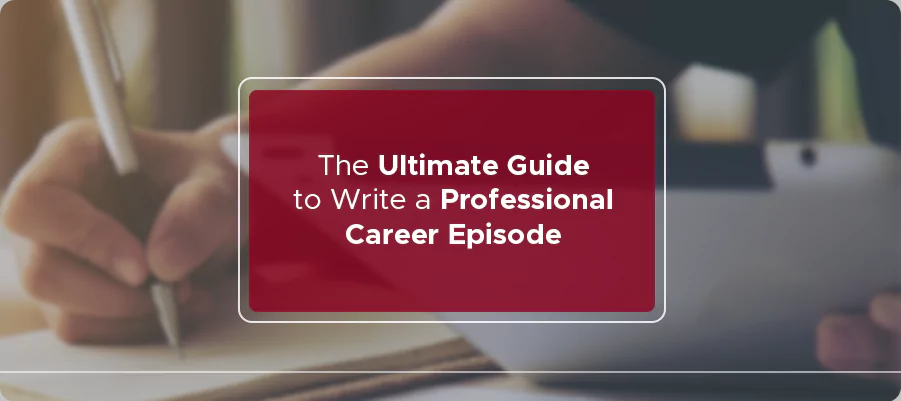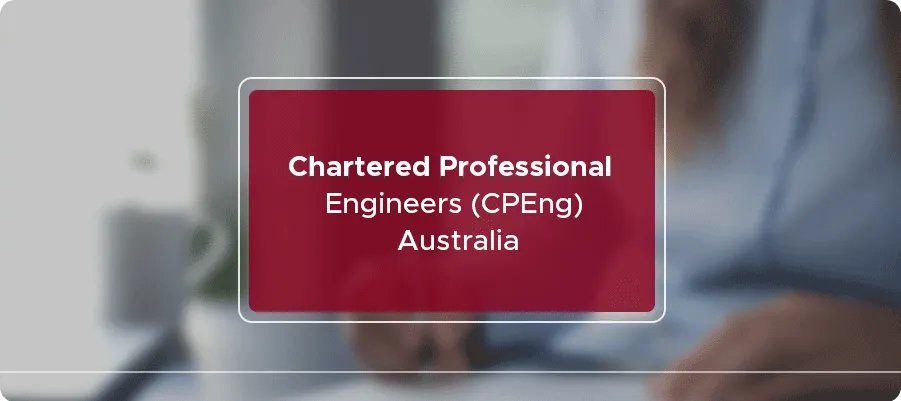
The Ultimate Guide to Write a Professional Career Episode
Are you an engineer looking to migrate to Australia? If so, you’ll need to provide a Career Episode (CE) as part of your Competency Demonstration Report (CDR). The career episode is a technical report that describes your engineering experience and skills and is a crucial part of the assessment process.
Writing professional and effective episodes can be challenging, but with the right approach, you can showcase your engineering skills and increase your chances of success. This ultimate guide to writing a professional career episode will provide tips, best practices, and practical examples to help you create episodes that meet Engineers Australia’s standards and demonstrate your technical competencies.
The career episode report depicts many aspects of your employment and engineering experience. You may compose career episodes for university projects you did throughout your studies or for projects you had in your professional working environment for some firm.
You don’t need to worry even if you do not have enough projects for career episodes, as EA accepts both your academic and professional projects. Writing a career episode involves some similar strategies in all instances. We have a staff of experts and authors who can provide you with the best career episodes.
Each career episode must focus on a certain time period or facet of your engineering skills and knowledge. It is written to demonstrate your engineering education, work experience, and professional training. In addition, each episode should demonstrate how you used your engineering skills in a certain industry.
One of the most important steps in preparing a successful CDR is to prepare a career episode. By writing excellent career episodes, an engineer may demonstrate that he or she can satisfy Engineers Australia’s standards and expectations for Migration Skills Assessment.
To prepare a great career episode, you must follow the instructions in the Migration Skills Assessment booklet. To write a professional career episode report, one must choose a specific incident or issue from their academic or professional lives and elaborate on it to illustrate how the engineer applied certain skills to complete that project.
Preparing career episodes for Engineers Australia necessitates a thorough command of the English language and a thorough understanding of engineering skills and expertise. The ability to write a convincing CDR is closely tied to one’s engineering experience.
Professional Career Episode Format

Each career episode should be written in an essay style rather than a table. Each career episode must adhere to the following format:
1. Introduction
The introduction should be written in around 100 words. This introduces the reader to the career episodes and should include information such as:
- The dates and duration of the career episode
- The location where the experience was acquired
- The name of the organization
- The job position title
2. Background
The background part is written in around 200-500 words. This sets things in motion and establishes the context in which you have been learning or working. It should include elements such as:
- The idea of the engineering project
- The objectives of the project
- The idea of your work area
- A graph of the authoritative structure featuring your position about the career episode
A statement of your responsibilities (give an official responsibility statement)
3. Personal Engineering Activity
The personal engineering activity is written in around 500 – 1000 words and is considered a quantitative element. In this section, you should describe in full the legitimate job you did.
It would be best to describe what you accomplished before describing how you did it. It is insufficient to describe the actions of a group or team; your individual work must be distinguished. Keep in mind that your engineering abilities are being evaluated. The following items should be included in this section:
- How you applied your engineering knowledge and skills
- The projects designated to you and how you achieved them
- A specific technical troubles/issues did you experience, and how did you solve it
- Any unique or inventive design work
- How you cooperated and teamed with other colleagues
4. Summary
The summary is written in around 50 -100 words. This section highlights your thoughts about engineering and your role within it. It should include elements such as:
- Your perspective on the entire project
- How does the task help in meeting the objectives
- How did your skill contribute to the project
Learn More: Temporary Graduate Visa Subclass 485 ⏱⌛️
Guidelines for Writing a CDR by Engineers Australia
The greatest danger of preparing your own CDR is that a lack of information or a badly written report might jeopardize your chances of receiving an Australian Skilled Migration visa. Therefore, carefully observe all of Engineers Australia’s CDR guidelines:
1. Your curriculum vitae (CV) provides a comprehensive overview of your engineering education and job experience. It should be a chronological listing of your employment history rather than a list of projects you’ve worked on. It should be printed on A4 paper and should be no more than three pages in length.
2. Mention the following for each workplace:
- Name and location of the organization
- contact details
- Dates and duration of employment
- Your job title
- Your job duties, as stated in your appointment letter, and a brief description of your work.
3. Your CPD should be specified in list format. It should not exceed one page in length (in A4 size).
4. Career episodes must be written in English. Each episode should be between 1,000 and 2,500 words in length.
5. It must not be very technical.
6. A career episode should be written in the first person and focus on what you did as an individual in the instance you’re telling.
7. Each paragraph of your career episode should be numbered as follows:
- Career episode 1 (paragraphs 1.1, 1.2, 1.3, etc.)
- Career episode 2 (paragraphs 2.1, 2.2, 2.3, etc.)
- Career episode 3 (paragraphs 3.1, 3.2, 3.3, etc.)
8. The paragraph numbers will be used for cross-referencing in the summary statement. A single summary statement covers all three career episodes.
Common Mistakes in Career Episode Preparation and Measures to Avoid Them
Preparing for a professional career episode is a delicate process that takes much consideration and planning. To achieve the requirements of a good evaluation, the author must evaluate many elements and combine a diverse range of components. The writers’ first and most important responsibility is to follow the CE format. Here are some of the most typical errors made by people who aren’t familiar with authoring Career Episodes:
1. Excessively Long
Everything done in a project must be included, and all efforts must be described in-depth, which will be appreciated. Because a word in a career episode may only be 2500 characters long, you must bear this in mind when writing your CE. Assessors do not have time to read irrelevant information.
2. Excessively Non-Specific
“I organized a circuit board” is a vague remark that doesn’t accurately reflect your work. Details like what design software program you used, what modifications were required, what parts the circuit board was made up of, and whether you needed to collaborate with someone from your team to finalize the design can help to make things more acceptable.
3. Excessively Technical
One of the most typical mistakes is for CEOs to be very technical, leaving little room for other elements such as “reporting,” “communication,” “cost-related choices,” “organizing meetings,” and “displaying pioneering procedures.” Rather than focusing on the technical explanation of the task performed, your career episode(CE) should incorporate all of the elements.
4. Not Focused on the Candidate’s Work
The candidate’s work, not the work of the group or organization to which the candidate belonged, must be the emphasis of the career episode. This necessitates the use of active voices such as “I did,” “I checked,” “I estimated,” and “I tested.” You are not permitted to offer work that has been “organized,” “administered,” or “stimulated.”
Even if you completed a group assignment, the assessors want to see what you achieved. Thus, when presenting something completed by a group, you should specifically state your dedication and participation.
5. Untruthful
Finally, many applicants believe they must incorporate fake elements to make their career episodes plausible. This is a typical blunder since assessors have enough expertise to recognize unsubstantiated assertions that appear to be outside the context. Rather, try to cover a component with sincerity, even if it means covering it in a weak or minor way.
Learn More: The Ultimate Guide to Write a Professional Career Episode? ✈️
Conclusion
In conclusion, writing a professional and effective Career Episode (CE) is a crucial part of the Competency Demonstration Report (CDR) process for engineers seeking to migrate to Australia. By following the tips, best practices, and examples provided in this guide, you will demonstrate your engineering skills and technical competencies to Engineers Australia and increase your chances of success.
Remember to make your CE well-structured, relevant, and clear and showcase your professional development. By following these guidelines, you can write a career episode that meets the standards of Engineers Australia and help you achieve your goal of migrating to Australia as a skilled professional.
Contact us today to get more details on the CDR report. Learn about CPD, curriculum vitae, and summary statements to understand the subject matter properly.





